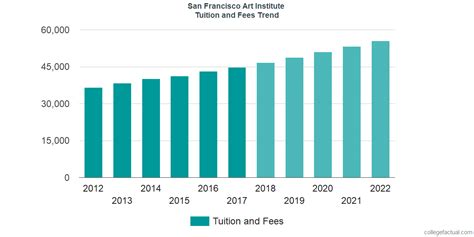Aspiring artists eager to hone their skills and pursue higher education often wonder about the financial implications of attending art school. The cost of art school can vary significantly depending on factors such as the institution, location, and program duration. Understanding these costs is crucial for making informed decisions about your artistic journey.

Tuition and Fees
Tuition and fees constitute the primary expense for students attending art school. The cost of tuition can range from several thousand dollars to tens of thousands of dollars per academic year. According to the College Board, the average tuition and fees for a four-year, in-state public art school was $10,440 for the 2021-2022 academic year, while the average tuition and fees for a four-year, out-of-state public art school was $26,090. For private art schools, the average tuition and fees ranged from $30,000 to $45,000 per academic year.
| Institution Type | In-State Public | Out-of-State Public | Private |
|---|---|---|---|
| Tuition and Fees (2021-2022) | $10,440 | $26,090 | $30,000 – $45,000 |
Materials and Supplies
Art school students require a range of materials and supplies to complete their coursework. These costs can vary depending on the specific discipline studied. For example, students pursuing painting may need to purchase canvases, brushes, paints, and solvents. Sculpture students may require tools, clay, and other materials. The cost of materials and supplies can range from a few hundred dollars to several thousand dollars per year.
Living Expenses
In addition to tuition and fees, students attending art school should also consider the cost of living. This includes expenses such as housing, food, transportation, and personal expenses. The cost of living can vary significantly depending on the location of the art school. For example, students attending art school in a major city may have higher living expenses than those attending school in a rural area.
| Location | Estimated Cost of Living (per year) |
|---|---|
| Major City (e.g., New York City) | $15,000 – $25,000 |
| Mid-Sized City (e.g., Boston) | $10,000 – $15,000 |
| Small City (e.g., Burlington, VT) | $5,000 – $10,000 |
Financial Aid
Many art schools offer financial aid to students in the form of scholarships, grants, and loans. Scholarships and grants are typically awarded based on merit or financial need. Loans must be repaid after graduation. According to the U.S. Department of Education, the average student loan debt for art school graduates was $21,000 in 2020.
Return on Investment
The cost of art school can be substantial, but it is important to consider the potential return on investment. Art school graduates can pursue careers in a variety of fields, including fine arts, graphic design, illustration, and art education. The median salary for artists and related workers was $49,280 in May 2021, according to the U.S. Bureau of Labor Statistics.
Tips for Reducing Costs
There are several strategies students can employ to reduce the cost of art school. These strategies include:
- Applying for financial aid. Art schools offer a variety of financial aid options to help students pay for tuition and other expenses.
- Choosing an in-state public art school. In-state public art schools are typically more affordable than out-of-state public or private art schools.
- Living in a shared housing arrangement. Sharing housing with roommates can help reduce the cost of rent and utilities.
- Buying used materials and supplies. Used materials and supplies can be found at thrift stores, online marketplaces, and from other students.
- Working part-time. Part-time work can help students earn extra money to cover expenses.
Conclusion
The cost of art school can vary significantly depending on factors such as the institution, location, and program duration. However, by carefully considering the costs and researching financial aid options, aspiring artists can make informed decisions about their artistic journey and pursue their dreams of a career in the arts.
